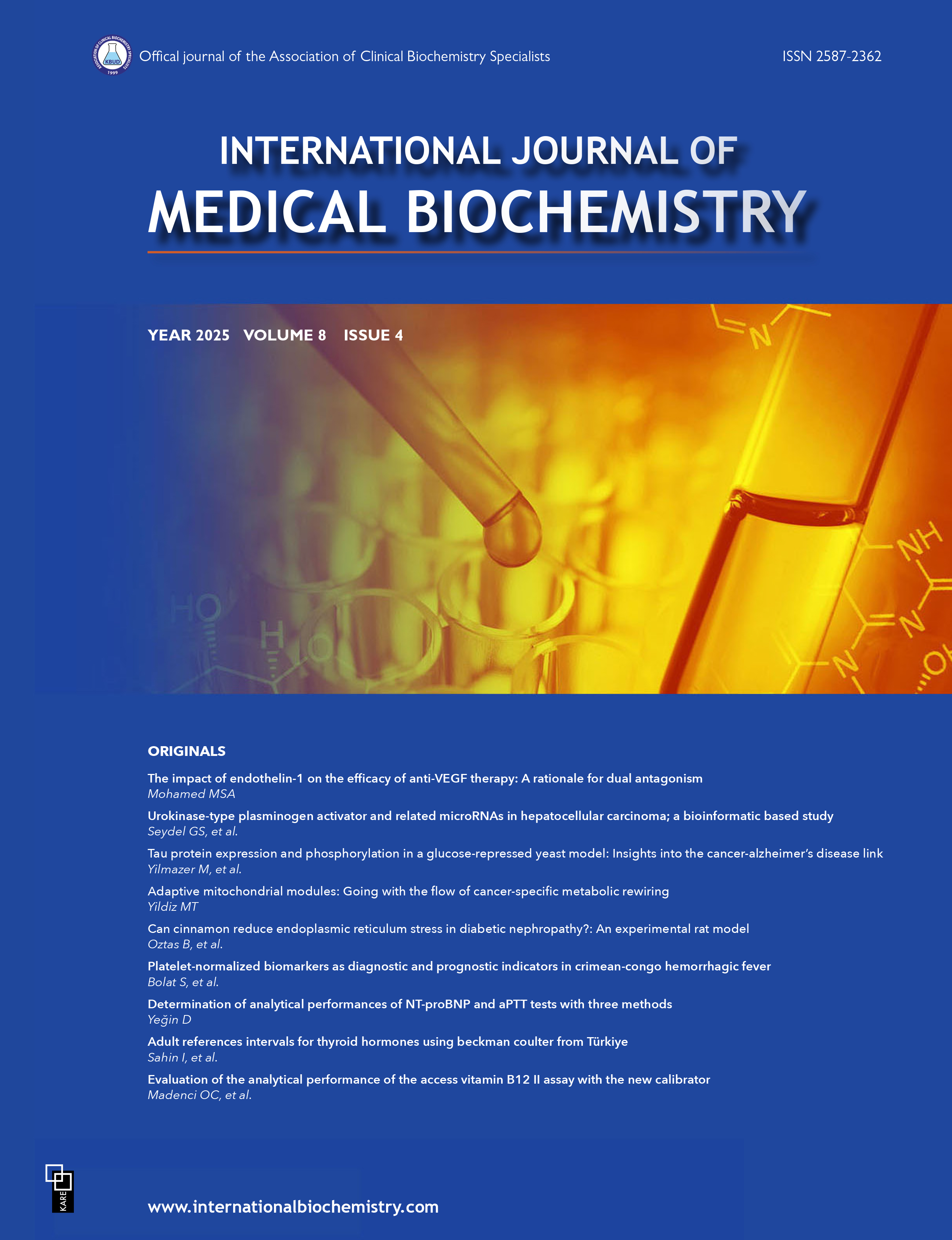C-reactive protein/albumin ratio in non-ST elevation myocardial infarction: Determining its predictive value for mortality
Mine Busra Bozkurk1, Veysel Ozan Tanik21Department of Biochemistry, Etlik City Hospital, Ankara, Türkiye2Department of Cardiology, Etlik City Hospital, Ankara, Türkiye
INTRODUCTION: Although the C-reactive protein/albumin ratio is accepted as a current biomarker in many diseases, such as myocardial infarction, studies on its clinical relevance in patients diagnosed with non-ST elevation myocardial infarction (NSTEMI) are limited. This study aimed to evaluate the prognostic significance of the C-reactive protein/albumin ratio in patients with NSTEMI.
METHODS: This retrospective study included 300 patients diagnosed with NSTEMI. All patients were compared in terms of survival status and clinical, biochemical, and inflammatory markers. Logistic regression and receiver operating characteristic (ROC) curve analyses were used to determine the predictive value of CRP, albumin, and the CRP/albumin ratio.
RESULTS: The CRP/ALB ratio was significantly higher in the mortality group than in the survivor group (p=0.001), whereas albumin levels were significantly lower (p=0.001). This ratio had a strong positive correlation with the CHA₂DS₂VASc score (ρ=0.711, p<0.001) and independently predicted in-hospital mortality (OR=1.485, p=0.046). ROC analysis revealed an area under the curve (AUC) of 0.891 for the CRP/albumin ratio, which was significantly better than that of CRP or albumin alone (p<0.001). Although the combined CRP-albumin model had a slightly higher AUC (0.894), it was not significantly different from the C-reactive protein/albumin ratio.
DISCUSSION AND CONCLUSION: The CRP/ALB ratio is a strong and independent predictor of in-hospital mortality in patients with NSTEMI. As an easily accessible and cost-effective biomarker, it provides valuable prognostic information and may improve early risk stratification and treatment strategies in clinical settings.
Manuscript Language: English







